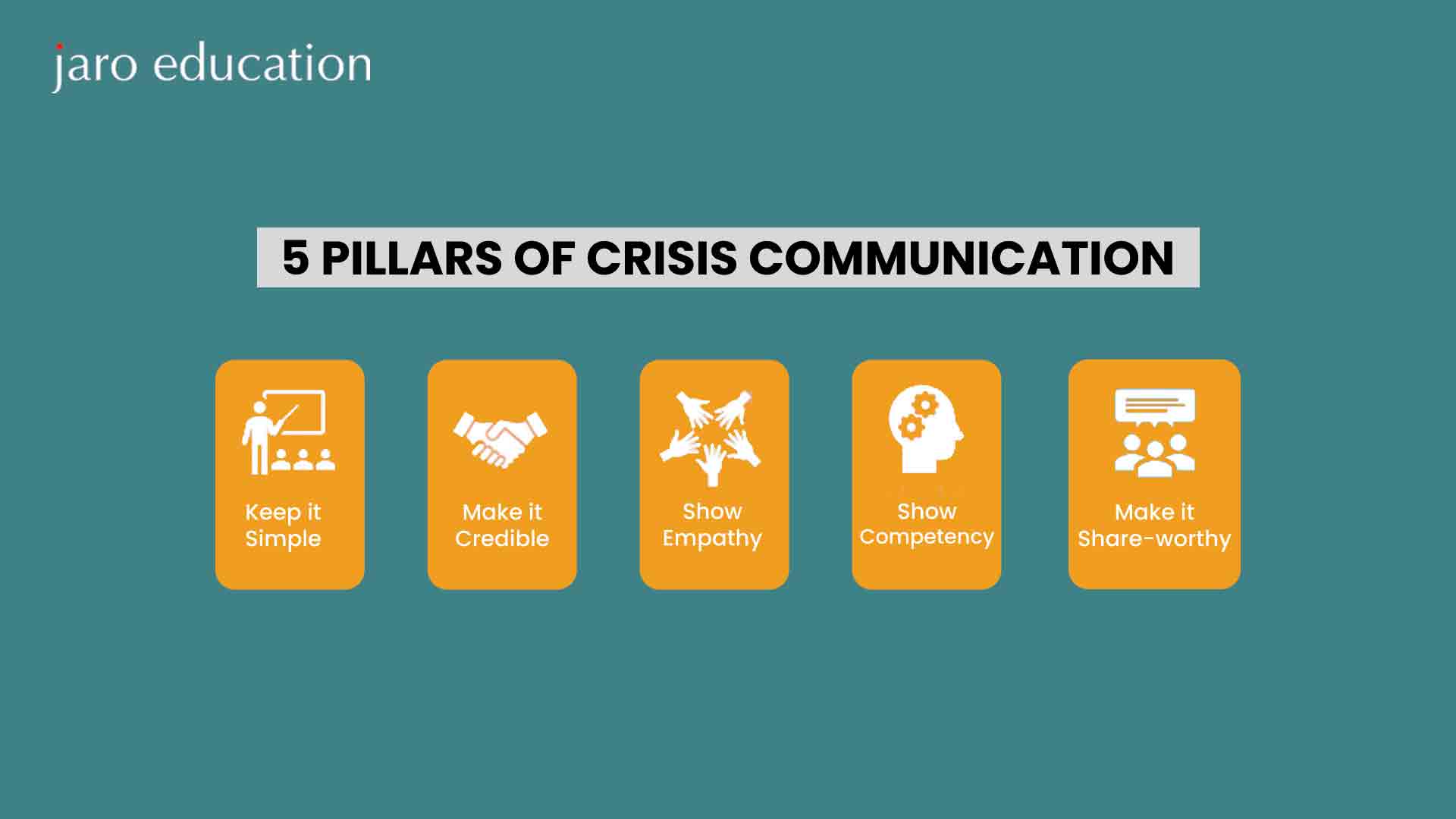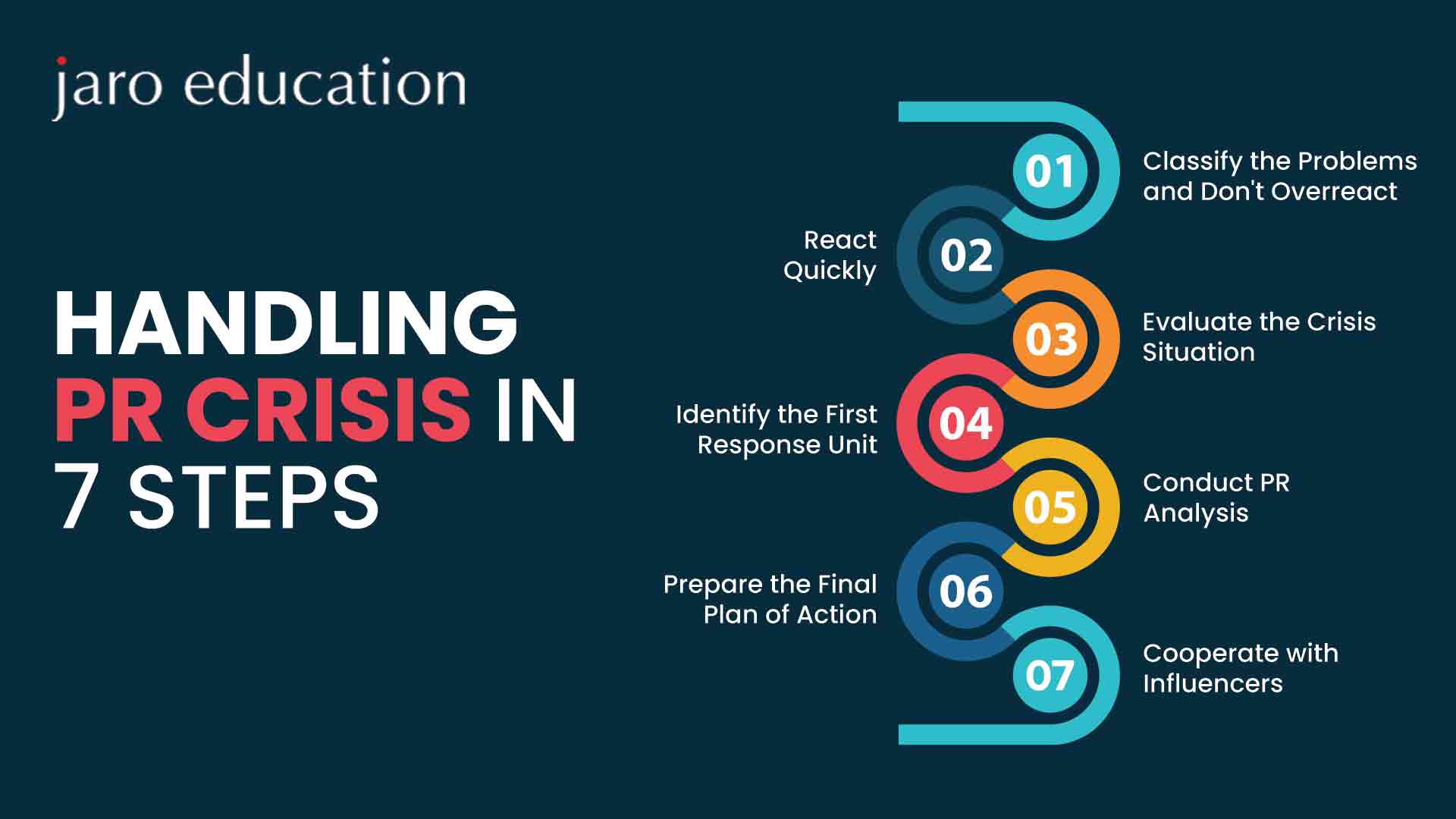
- jaro education
- 6, April 2024
- 2:00 pm
Businesses of various sizes and across different industries are increasingly recognizing the importance of formulating strategies for issues and crisis communication. Recent statistics from LinkedIn indicate that around 84 per cent of organizations have actively implemented plans for emergency communication, with 55 per cent employing three or more distinct processes for such scenarios.
Despite these seemingly positive figures, a notable disparity in confidence levels is apparent. Surprisingly, nearly two-thirds of organisations express a lack of confidence in their preparedness to handle a crisis event. This paradox raises concerns about the efficacy of current preparedness measures.
While the significance of issues and crisis communication is widely acknowledged, organizations grapple with a prevailing sense of unpreparedness. This incongruity prompts a deeper exploration of the foundational aspects of issues and crisis communication, aiming to uncover the factors contributing to this perceived lack of readiness, despite significant investments in related processes.
What is Crisis Communication?
Crisis communication is a multifaceted strategy encompassing a set of technologies, systems, and protocols meticulously designed to facilitate effective communication when an organization faces significant threats to its business or reputation. The overarching goal is to create a robust framework that allows for swift and adept responses during moments of crisis.
Table of Contents
Organizations recognize the need to prepare for a diverse range of potential crises, understanding that challenges can manifest in various forms. These crises may include extreme weather conditions, criminal activities, cyber-attacks, product recalls, instances of corporate malfeasance, reputation crisis, and public relations incidents. The proactive identification and acknowledgement of these potential threats lay the foundation for a comprehensive crisis communication plan.
The essence of preparing ahead of time for crises lies in the ability of relevant personnel to communicate rapidly and effectively with one another. This communication is vital for sharing critical information that empowers the organization to promptly rectify the situation. The overarching objectives include protecting the well-being of customers, employees, and assets, as well as ensuring the continuity of business operations.
In essence, crisis communication is not just a reactive measure but a proactive and strategic approach. It serves as the linchpin in an organization’s resilience against unforeseen challenges, fostering a culture of preparedness, adaptability, and effective communication that ultimately contributes to the overall stability and longevity of the enterprise.
Techniques/ Strategies of Power Electronics Control
An example of power electronics control is a converter. And to alter its output voltage, two methods of control are used. These two methods or techniques are time ratio control and current limit control.

The Need for Crisis Communication
The imperative of crisis communication must be balanced for all businesses. It involves the meticulous documentation of communication protocols to be activated during times of heightened difficulty or peril. The stakes are particularly high in such situations, as an organization’s reputation hangs in the balance. Effectively disseminating information to the public and other stakeholders becomes paramount to allay concerns and counteract the spread of rumors or misinformation.
Integral to comprehensive crisis management plans are disaster recovery and incident response planning, which are concurrently deployed. To bolster preparedness and ensure effective crisis communication, organizations must proactively acknowledge the inevitability of facing a crisis at some point in their operational journey. Instances that warrant crisis management planning ranges from on-site incidents resulting in injury or property damage to natural disasters like earthquakes, public incidents such as terror attacks or pandemics, and cybersecurity threats including ransomware exploits and data breaches—particularly those involving the exposure of personally identifiable information.
In this era where data reigns supreme, and the digital footprint of organizations continues to expand, the mastery of data science becomes a pivotal asset in enhancing crisis management capabilities. The “Post Graduate Certificate Programme in Data Science for Business Excellence and Innovation” by IIM Nagpur is meticulously designed to arm professionals with the advanced analytical prowess and technical acumen needed to navigate the intricate dynamics of data in crises. This course not only sharpens one’s ability to analyze and interpret data for preemptive measures but also fortifies the strategic decision-making process during crises, ensuring a swift and effective response.
Effective Crisis Communication Strategies
Effective crisis communication is a critical aspect of organizational resilience and reputation management. To navigate challenges successfully and minimize potential harm during times of crisis, businesses need to adopt well-thought-out strategies. Here are some key strategies for effective crisis communication:
Proactive Planning is Paramount
Craft a comprehensive contingency or scenario plan that meticulously details various potential crises and their corresponding responses. While creating contingency plans may seem labor-intensive, the investment is invaluable when confronted with an actual crisis. Many organizations shy away from the effort involved, but the reality is that these plans save critical time and resources. It is an astute business practice to have a readily implementable action plan that can be swiftly executed by every member of the executive, communications, and operations teams when a crisis unfolds.
Emphasize Swiftness in Response
In the complex domain of crisis management, the crucial need for swift acknowledgement takes center stage. While intricate details may unfold gradually, the immediate recognition of crises becomes a foundational strategy. Rapidly acknowledging the situation to the media and key stakeholders serves the dual purpose of quelling speculation and reassuring audiences that proactive and decisive management is underway. In the dynamic sphere of crisis response, the essence lies in achieving seamless synchronicity between speed and control.
Cultivate Responsible Transparency
The corporate world has witnessed the repercussions of scandals such as Enron, AIG, BP, and VW, underscoring the devastating impact of fraud and deception on organizations. These instances provide potent PR lessons: honesty is paramount. Assume responsibility. Share the unvarnished truth. Refrain from engaging in cover-ups, deceit, or any form of unethical behavior. It is crucial to bear in mind that misconduct will inevitably surface in headlines – sooner or later. Upholding ethical standards and transparent communication is not just a matter of corporate integrity; it is a strategic imperative for maintaining trust and credibility, even in the face of adversity.
Harness Stakeholder Engagement
Prioritize communication with key stakeholders throughout the crisis, keeping them informed about the situation’s developments and the organization’s response measures. Engage in open dialogue, address concerns, and demonstrate a commitment to resolving the issue. By involving stakeholders in the communication process, organizations can build a supportive network and foster understanding during challenging times.
Conduct Post-Crisis Evaluation
Following the resolution of a crisis, undertake a thorough evaluation to assess the efficacy of the crisis management strategy. Scrutinize the response, pinpoint areas requiring improvement, and incorporate insights gained into subsequent crisis communication plans. Consistently refining these plans based on real-world experiences contributes to bolstering an organization’s resilience and preparedness to face future challenges.

Famous Crisis Communication Examples
Numerous organizations have faced crises throughout the years, and their approaches to crisis communication provide valuable insights into effective and ineffective strategies. Here are a few notable crisis communication examples:
1. Tylenol Poisoning Crisis (1982):
Scenario: Seven people died after consuming Tylenol capsules laced with cyanide.
Communication Strategy: Johnson & Johnson swiftly recalled 31 million bottles, cooperated with authorities, and kept the public informed through press conferences and media releases. They introduced tamper-resistant packaging and regained trust through transparency and responsibility.
2. Exxon Valdez Oil Spill (1989):
Scenario: The Exxon Valdez oil tanker spilled 11 million gallons of crude oil off the coast of Alaska.
Communication Strategy: Exxon initially downplayed the extent of the spill, leading to severe backlash. A lack of transparency damaged the company’s reputation. Effective crisis communication involves honesty and swift response, which Exxon lacked in the early stages.
3. Toyota Recall (2009-2010):
Scenario: Toyota recalled millions of vehicles due to acceleration and braking issues.
Communication Strategy: Initially, Toyota faced criticism for a slow response and perceived lack of transparency. Eventually, the company acknowledged the issues, apologized and implemented corrective measures. The crisis highlighted the importance of prompt acknowledgement and decisive action.
4. Facebook-Cambridge Analytica Scandal (2018):
Scenario: Facebook faced allegations of mishandling user data, which was exploited by Cambridge Analytica for political purposes.
Communication Strategy: Initially, Facebook’s response was criticized for being slow and inadequate. The company later took steps to enhance data privacy, and CEO Mark Zuckerberg testified before Congress. The incident emphasized the need for proactive communication and transparent actions to regain trust.
Social Media's Impact on Crisis Communication
Social media is a big deal when it comes to handling tough situations for businesses. Let’s break down how it works:
Instantaneous Information Dissemination
Embrace social media as a dynamic channel for swift and widespread information sharing. During a crisis, leverage platforms like Twitter, Facebook, or LinkedIn to disseminate updates, key messages, and crucial information in real-time. This opportunity enables organizations to keep their audience well-informed and engaged during critical moments, fostering transparency and trust.
Real-time Interaction
Seize the chance to engage with stakeholders in real-time on social media platforms. Promptly address concerns, answer questions, and provide clarifications, demonstrating a commitment to open communication. This immediate interaction not only helps in managing the crisis effectively but also reinforces the organization’s responsiveness and dedication to resolving issues.
Transparency and Authenticity
Utilize social media to showcase transparency and authenticity. Share candid insights into the situation, admit mistakes if necessary, and communicate openly about steps being taken to address the crisis. By embracing honesty and openness on these platforms, organizations can strengthen their credibility and rebuild trust with their audience.
Monitoring Public Sentiment
Take advantage of the chance to observe the public’s feelings on social media using analytics tools. Gain insights into the audience’s reactions to the crisis, identify emerging concerns, and customize communication strategies accordingly. This proactive method empowers organizations to anticipate potential issues, adjusting responses to align with the changing public sentiment.
Crisis Detection and Early Warning
Harness social media as an early warning system for potential crises. Actively monitor online conversations, identify emerging issues, and swiftly intervene to address concerns before they escalate. By leveraging social listening tools, organizations can detect signals of unrest or dissatisfaction early on, allowing for timely and preventive action.
Global Reach
Leverage the global reach of social media platforms to communicate with diverse audiences. Tailor messages to resonate with different cultural contexts and languages, ensuring that crisis communications are inclusive and culturally sensitive. This global outreach opportunity allows organizations to demonstrate a commitment to addressing the concerns of a diverse stakeholder base.
Social Listening
Actively listen to feedback and concerns expressed on social media platforms. This opportunity enables organizations to adapt responses in real-time based on the sentiments of stakeholders. By demonstrating attentiveness to the audience’s needs and concerns, organizations can build a more responsive and adaptive crisis communication strategy.
Crisis Response Coordination
Facilitate seamless coordination between different departments involved in crisis response through social media. Use dedicated channels for internal communication and collaboration, ensuring that all teams are aligned in their messaging and actions. This coordinated response opportunity ensures a unified front and consistent communication during crises.
Post-Crisis Analysis
Analyze social media data post-crisis to evaluate the effectiveness of communication strategies. This opportunity provides valuable insights into what worked well and areas that need improvement. By conducting a thorough analysis, organizations can continuously refine their crisis communication approach, enhancing preparedness for future challenges.
Final Words
The increasing adoption of crisis communication strategies in modern business is evident. Despite many organizations implementing emergency plans, a prevailing lack of confidence in crisis preparedness raises questions about the effectiveness of current approaches. Crisis communication is not just a reactive measure but a proactive and strategic approach, fostering a culture of adaptability and effective communication. The imperative of meticulous documentation of communication protocols, disaster recovery planning, and acknowledging the inevitability of crises becomes evident.
Effective crisis communication strategies, such as proactive planning, swift response, and responsible transparency, are vital for organizational resilience. Notable examples provide insights, emphasizing the impact of honest and transparent communication. Social media, with its global reach and real-time interaction, plays a pivotal role, offering opportunities for monitoring public sentiment and conducting post-crisis analysis. In essence, crisis communication is a strategic tool for navigating challenges, ensuring business continuity, and maintaining stakeholder trust in the face of uncertainty.









